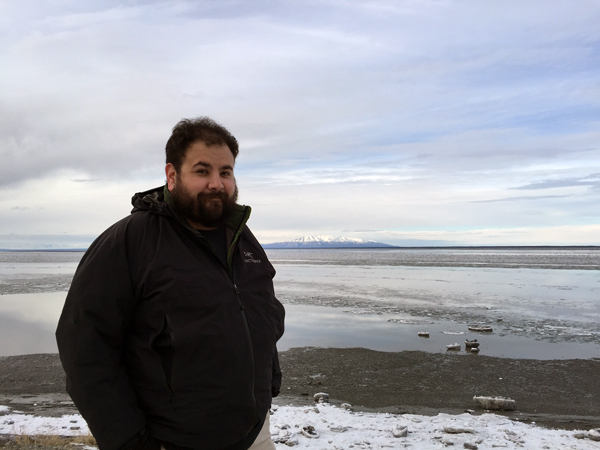
Anchorage is celebrating it’s centennial this year, but the area has been inhabited for centuries longer by the Dena’ina, who still live in the area today. KSKA’s Anne Hillman spoke with Dena’ina historian Aaron Leggett about the area’s past and its future.
For centuries the Dena’ina of Eklutna started their fishing season in the spring at what’s now the heavily industrialized area of Ship Creek near modern-day downtown Anchorage.
“If times were getting tough in the spring when you’re in that kind of transitional period and your winter supply of salmon didn’t last, then you could go to Dgheyaytnu.” That’s the Dena’ina name for the area, says tribal member and historian Aaron Leggett. There they would catch the three spine stickleback. “So not a very big fish. So they must have been catching them by the tens of thousands and making a soup or a broth from that.”
But in 1915, a group of settlers built a tent city right where the Dena’ina fished. Leggett says his people adapted. They found work on the railroad and focused their efforts on other traditional fishing sites, like Point Woronzof.
Leggett creeps down the ice-encrusted trail to the beach and looks out over the water.
“100 years ago, when Dena’ina was the predominant language spoken here, this was Nuch’ishtunt, “Place Protected from the Wind.”
Dena’ina came to the area every spring and early summer to fish in the silty waters for king and silver salmon. They fished across Knik Arm, too, and off of Fire Island. North of Ship Creek they set up a type of wooden scaffolding over the mudflats so they could harvest salmon even when the tides went out.
But the local Dena’ina were forced to give up another favored fishing spot when the U.S. military took over Point Woronzof during the Cold War. So what remains of the fish camps? Leggett says not much, and what is there, he wants left alone.
“We do know of some, some things that were left behind,” he says hesitantly. “But we don’t like to talk specifically about what they were because of concerns of looting. But nothing really that I could say specifically.”
So is the area still important for the Dena’ina people?
“I guess to me, the connection is that despite airplanes flying over head,” he says as an airplane drowns him out as if on cue.
And despite the parking lot and the windmills and the lack of trees… the ocean is still the same. Leggett says that many people more often visit other places, like Eklutna Lake, to find spiritual connections but all of the Anchorage Bowl is part of their homeland. It’s where they hunted caribou and gathered berries in the summer. He says it’s something that many people, even other Alaska Natives, used to forget.
“Today, now if I say I’m Dena’ina, most people or a lot of people, will say ‘Oh, you guys are the Indians that used to live here.’ And I say, ‘Well, we’re still here but at least you recognize that we used to be here.’ Because I don’t know, for some reason, maybe because Anchorage is always looking toward the future, it’s like an empty cultural vacuum.”
But Leggett says that’s starting to change in Anchorage as the Dena’ina themselves continue to reawaken to their own culture and educate others.
Anne Hillman is the healthy communities editor at Alaska Public Media and a host of Hometown, Alaska. Reach her at ahillman@alaskapublic.org. Read more about Anne here.





